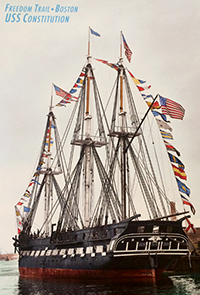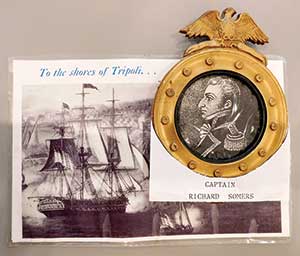 Eagle Feathers #260 – The Hammock
Eagle Feathers #260 – The Hammock
By Bob (Monty) Doherty
Relaxation is said to be a process that decreases the effects of stress on your body and mind. Some proven techniques have been meditation, visualization, deep breathing and yoga. An old- fashioned way of swinging, swaying, rocking and rolling gently in a hammock is said to also help.
Hammocks have been with us since at least 1492 when Columbus reported people sleeping in nets between trees. He brought the contrivance from the new world to Europe. It was called the Cradle of the Gods by the natives of Central America where it originated.

Sailors took to them readily. They offered them comfort above and away from their ships wet and dirty decks. This sleeping net became their favorite bed. They were portable enabling one to sleep in different places. Sailors brought them ashore in preference to their bunks; and when tightly wrapped, they served as flotation devices.

In 1630, the flagship Eagle, later rechristened the Arbella, sailed in advance of 11 ships with 700 Puritans from England to Massachusetts. Our first Governor, John Winthrop, was on board with the leaders of the new colony. Across its decks were ramshackle rooms, bedding, stores, supplies and according to Winthrop, “hammocks strung from every angle.”

Another ship familiar to hammocks is the 225-year-old USS Constitution, the oldest floating commissioned warship in the world. She draws over a half million visitors each year to explore beneath her rigging and berth deck. The berth deck is the deck on which the hammocks on warships were formally swung. One of her heroic officers who gave his life during the Tripolitan War was Commodore Richard Sommers, Somerville’s namesake. He planned his last mission on September 4, 1804, while on board the Constitution.

On December 7, 1941, the Empire of Japan attacked the American fleet at Pearl Harbor, Hawaii, which launched America into World War II. Somerville’s wartime industry exploded with large companies’ workloads intensifying to three shifts, 24 hours a day, seven days a week.
Thousands of working men and woman from all over New England and northern New York came to aid in the war effort and to work in greater Boston’s shipyards and factories. They only wanted a roof over their head, a warm meal and a place to sleep between work shifts.
Somerville housed her share. Brass hammock hooks can still be seen adorning hallways, large closets and tight spaces in some of her homes. They are reminders of the patriotic wartime population and where many of them slept.
From Columbus and his hammock-tree-bark swing, to astronauts swaying in moon hammocks and college-campus hammock gardens, the sought-after concept hasn’t changed much. It’s relaxation.















Reader Comments